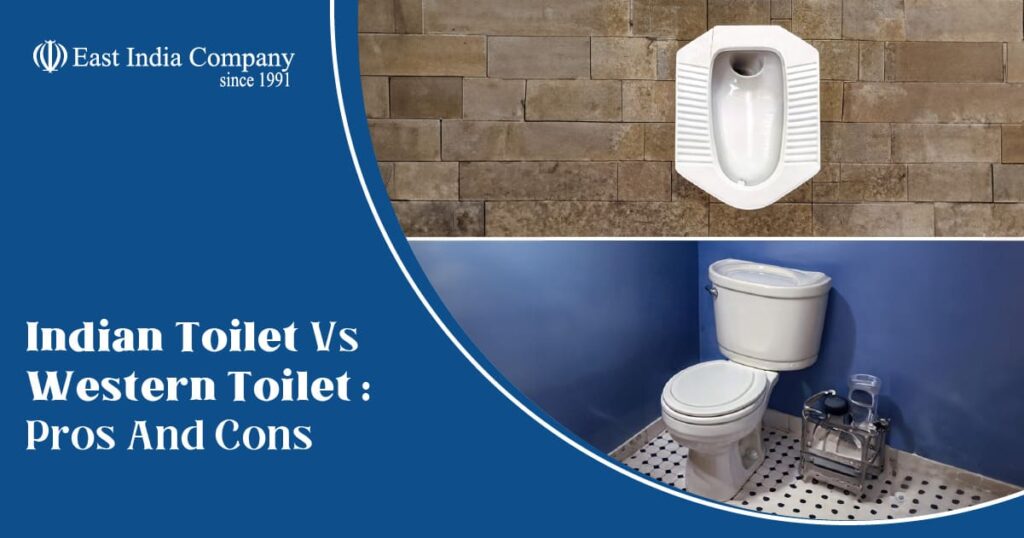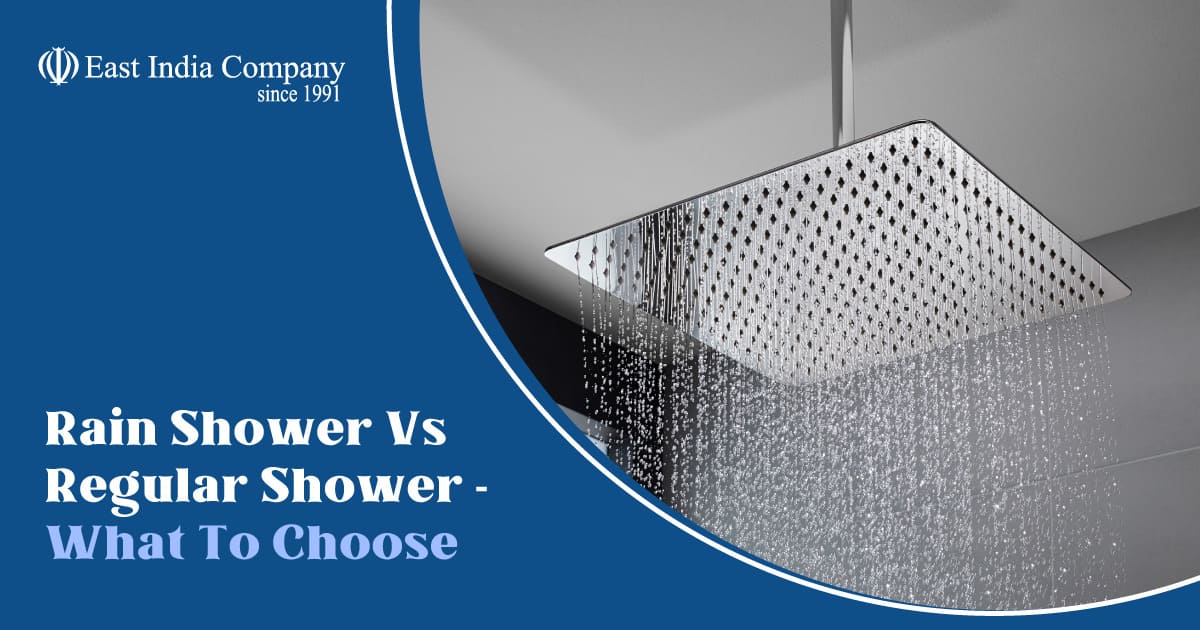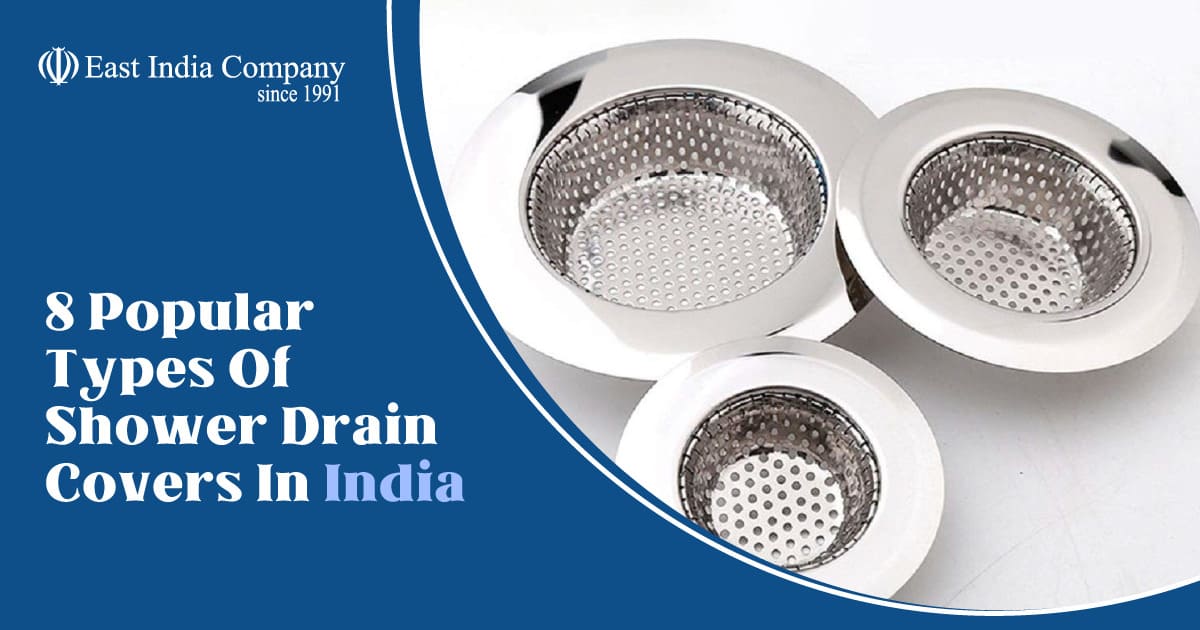Short Summary
If you are renovating your bathroom and stuck in the battle, ‘Indian toilet Vs Western toilet’, this blog is for you! Know the pros and cons of both and decide better.
Introduction
There’s always a huge debate when it comes to choosing the perfect toilet for your home- Indian toilet Vs Western toilet- which is best and more suitable. Since both types come with their own set of advantages and disadvantages, making a decision can be a crucial one.
Though choosing the right one depends on your personal preferences, cultural background, and practical needs, if you have a clear understanding of both toilet systems and know their pros and cons, you can make an informed decision.
And who is better to guide you through this than East India Company? With a wide range of sanitaryware products, including Indian and Western toilets from top brands, we will help you find the right piece for your home that matches your needs and preferences.
Indian Toilet Vs Western Toilet: Know The Differences
Let’s start by getting to know the differences.
| Aspect | Indian Toilet | Western Toilet |
| Design | Indian toilets are floor-mounted, come in squatting positions, and are typically made of ceramic or concrete. | Western toilets are floor-mounted or wall-mounted, come in a seated position, and are made of various materials. |
| Usage | Indian toilets require squatting posture. | Western toilets require a seating position. |
| Water usage | Requires minimal water usage. Mostly comes with manual flushing or low-flush systems. | Requires moderate to high water usage. Has flushing mechanisms. |
| Comfort | Indian toilets may be uncomfortable for the elderly or for those accustomed to seated toilets. | Western toilets are comfortable for most people, especially those with mobility issues. |
| Maintenance | Indian toilets have a simple design and may require manual cleaning | Western toilets are easy to clean and maintain and require the removal of seats for thorough cleaning. |
| Space requirement | They come in a compact design and are suitable for small bathrooms. | Western toilets usually require more space for installation, especially for the ones with elongated bowl models. |
| Accessibility | Indian toilets are not suitable for individuals with mobility issues, elderly, or disabled users. | Western toilets are suitable for everyone because they have features such as raised height, grab bars, etc. |
| Cost | Indian toilets are more affordable in terms of installation and maintenance costs. | Western toilets are expensive compared to Indian toilets in terms of initial cost and maintenance. |
| Cultural Significance | Indian toilets were part of traditional South Asian culture, influenced by hygiene beliefs and practices. | Western toilets are associated with modernity and sanitation standards in Western societies. |
| Also Read: 10 Things to Look When Buying Toilet
Understanding Indian Toilets
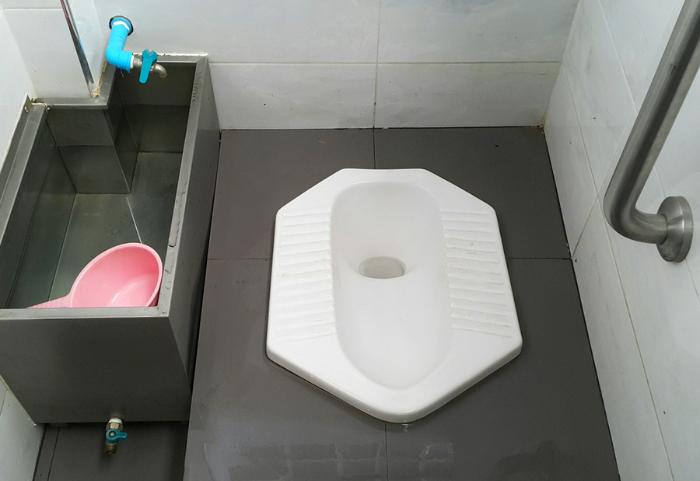
Indian toilets are also known as squat toilets, where the users are required to position themselves above the toilet pan by squatting. They have a simple yet effective design, low installation costs, and minimal maintenance requirements.
Indian toilets date back to the Indus Valley Civilisation, where they were prevalent. They hold strong cultural significance in countries linked to traditional practices and hygiene beliefs. They are widely used in many parts of India, South Asia, and other countries with similar cultural backgrounds.
Indian Toilet Pros
- Cost-effective installation and maintenance
- Hygienic squatting position
- Minimal water usage
- Simple design
- Eco-friendly (less water usage)
- It can be suitable for small bathrooms
Indian Toilet Cons
- Not much suitable for individuals with mobility issues
- Limited adaptability to modern bathroom designs
- It may require manual cleaning
Understanding Western Toilets
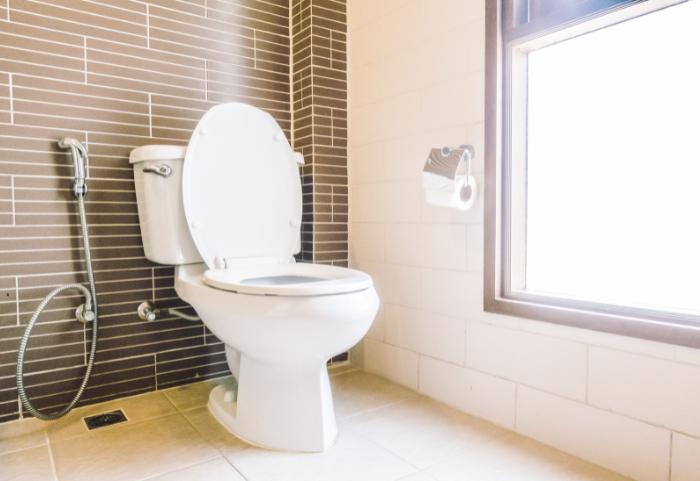
Western toilets, also known as seated toilets, are the most common type of toilet in Europe and North America. They have a flush system to remove waste. They have a sleek, modern design and comfortable seating position, which ensure ease of use and serve as a more inclusive option.
Western toilets have gained popularity because of their convenience. Now, this is the standard toilet type in almost every household.
| Also Read: 5 Toilet Flushing System Types in India
Western Toilet Pros
- Comfortable seating position
- Suitable for people with mobility issues
- Easy to clean and maintain
- Modern and stylish appearance
- Room for customisation
- Accessibility features
- Widely available and standardised
Western Toilet Cons
- Installation and maintenance costs are a little costly
- Higher water consumption and requires more space for installation
- May not be suitable for all body types and preferences
Addressing Common Myths

There are many misconceptions revolving around Indian and Western toilets regarding their hygiene and cleanliness.
Myth 1: Indian toilets are unhygienic
Fact: Indian toilets promote better hygiene due to squatting, eliminating direct contact between the body and the toilet seat. If they are cleaned and maintained regularly with water, they can be hygienic.
Myth 2: Western toilets are always more hygienic
Fact: Western toilets require direct contact with the body and toilet seat. They must be cleaned and maintained to prevent the buildup of bacteria and germs. Proper usage and hygiene practices, such as closing the toilet lid before flushing, improve cleanliness.
Factors To Consider When Choosing Between Indian and Western Toilets
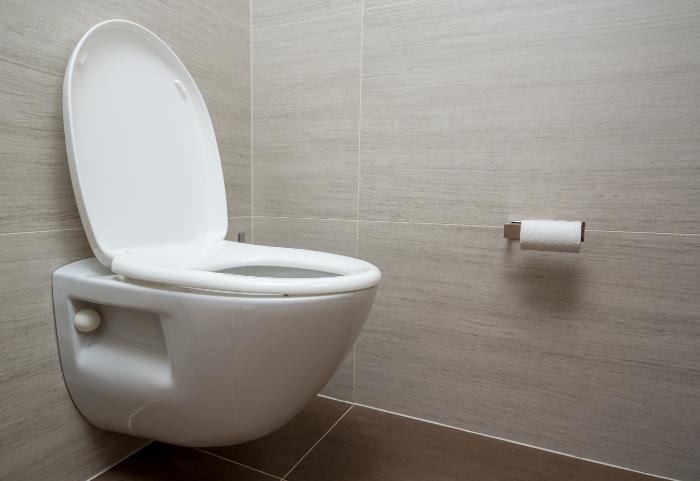
Now that you know the pros and cons of Indian and Western toilets, consider the following factors:
1. Bathroom size and layout:
You must measure your bathroom space before choosing the toilet type. Since Indian and Western toilets come in various sizes, it is better to know the bathroom size and layout before making a purchase.
2. Preferences and needs:
Consider who will use the toilet and know their preferences. For example, elders or individuals with mobility issues may find Western toilets more comfortable than Indian toilets.
3. Budget constraints:
Indian toilets are generally less expensive to install and maintain. However, for the amount you pay, Western toilets come with useful advanced features.
4. Accessibility requirements:
Choose Western toilets if there are people with mobility challenges and disabilities. Squatting in Indian toilets may not seem feasible for them.
Wrapping Up
In the battle, Indian toilet Vs Western toilet, both have their own set of pros and cons. Choosing the best between these two depends on personal preference and individual needs. You must decide whether you need the traditional simplicity of Indian toilets or the modern convenience of Western toilets.
East India Company Can Help You Find The Perfect Solution!
At East India Company, we know how important sanitaryware is in every household. As the leading sanitaryware and bathroom fittings dealers and sellers in Chennai, we pride ourselves in offering collections from top brands like Jaquar, Parryware, Germa, Generit, Nirali, Hindware, and others.
If you want to buy functional, exquisite, and luxurious bathroom and sanitaryware fittings, head to our Parry’s Corner and Vadapalani stores. We are sure you will love our wide range of options.
Get your hands on our featured Indian and Western toilets today!
FAQs Releated To Indian Toilet Vs Western Toilet
1). Is it possible to change Indian toilet to Western toilet?
Yes, it is possible to convert an Indian toilet to a Western toilet. You can do this with the help of a professional plumber and make the necessary alterations to the bathroom plumbing and layout.
2). Indian Toilet Vs Western Toilet Which is the best?
It depends on an individual’s preferences, cultural background, and practical needs. Both toilets have their set of advantages and disadvantages. And the best between them varies from person to person.
3). Is it hygienic to use Western toilet?
Western toilets can be hygienic when properly maintained through regular cleaning and adherence to prepare hygiene practices, minimising the risk of germs and bacteria.
4). Which toilet is mostly used nowadays?
Western toilets are most commonly installed in urban areas and modern households due to their convenience, sleek design, and suitability for those with mobility issues.
5). Should we use stool for Western toilet?
For those accustomed to the squatting position of Indian toilets, using stools gives better leg support and positioning, thus enhancing comfort and posture while using Western toilets.

